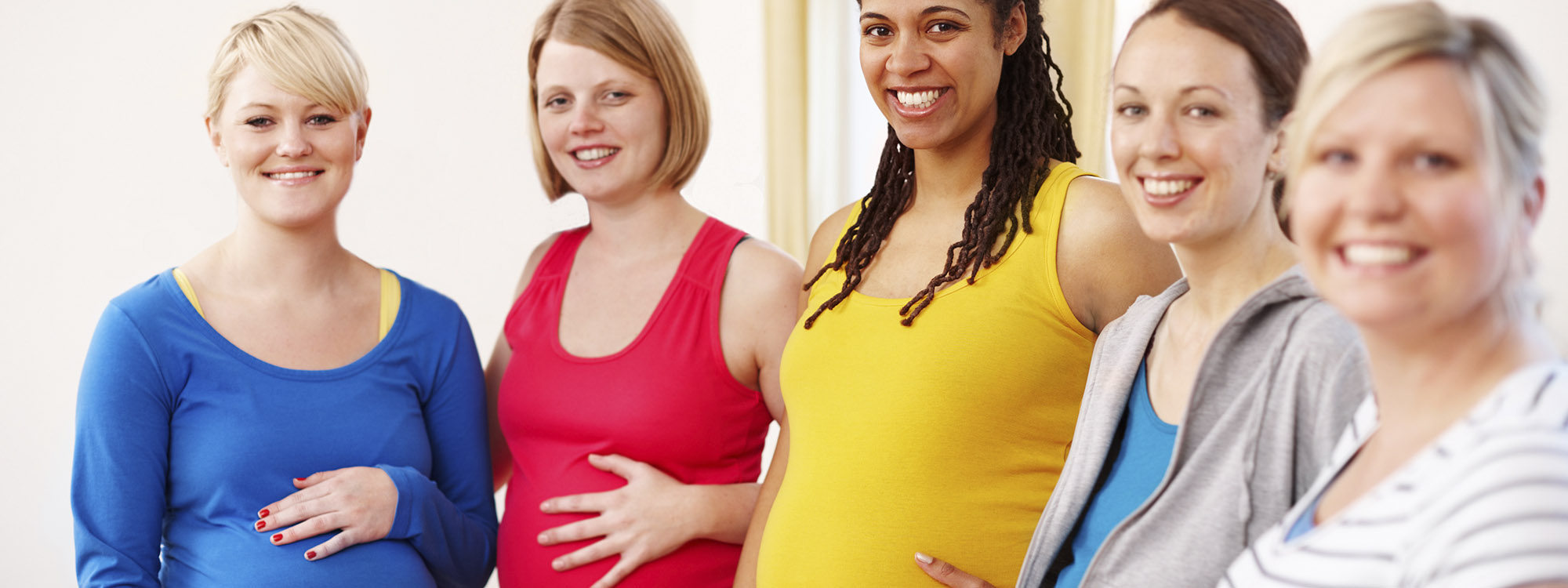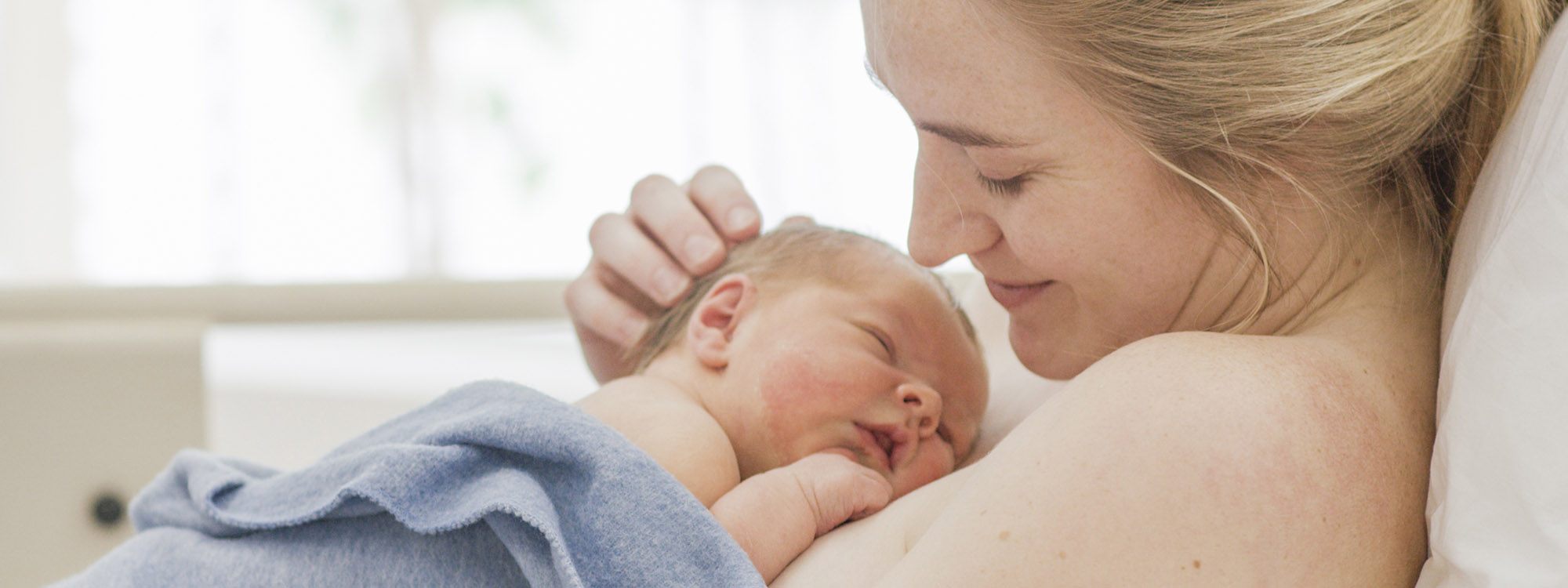English summary
Effects of the birthing room environment on vaginal births and client-centred outcomes in women planning a vaginal birth at term: a multicentre RCT (BE-UP)
In Germany, the rate of cesarean deliveries associated with increased maternal and neonatal morbidity is above the WHO recommended rate. The German National Health goal „Health Around the Birth“ (Gesundheit rund um die Geburt) calls for strategies and measures to promote vaginal births. One such measure could be to improve the birth environment. Until 2018, there was no RCT that had sufficient statistical power to test the independent effect of the delivery environment on the mode of birth.
The principal research question is whether a redesigned birthing room (complex intervention), which fosters maternal mobility, relaxation, coping with pain, self-determination and personal comfort, results in a higher probability of vaginal birth (VB) in hospital for women with a singleton cephalic presentation at full term planning a VB (compared with controls). The primary alternative hypothesis states that among women who are at full term and planning a VB, those who are assigned to the intervention group will give birth vaginally significantly (p<0.05) more often compared with those in the control group.
The RCT examines the effectiveness of an alternative delivery room (intervention) on the primary outcome „vaginal delivery“ in 17 obstetric departments (clinics) in Saxony-Anhalt, Thuringia, Hesse, Rhineland-Pfalz, Lower Saxony, Schleswig-Holstein and North Rhine-Westphalia and Berlin. It is an actively controlled clinical study with two parallel study arms to test the superiority of the intervention. The complex intervention consists of the central feature that the usual delivery bed is not in the birthing room, or it is hidden from sight. Instead, there is a floor mattress and a soft floor mat, a beanbag, several foam cubes including a birth cushion, photo posters depicting upright positions, nature scenes via DVD, an en-suite station for drinks and snacks, a homelike unit of a table and chairs and a floor lamp for flexible indirect lighting.
The participants (subjects) of the study are primiparous and multiparous women with a singleton pregnancy in cephalic presentation who are aiming for a vaginal birth. Randomization was centrally controlled and concealed. Blinding of the participants and staff was not possible. Data were regularly monitored by independent external staff (monitors). A follow-up survey at 3 months postpartum and a health economic evaluation were planned.
The effect of the intervention is determined by an increase of vaginal births by an absolute 5% (from baseline rate: 72%) to 77% with a statistical power of 90%, a significance level of 5% and taking a dropout rate of up to 10% into consideration. Other expected outcomes are: better client-oriented outcomes, greater self-determination during childbirth, fewer medical interventions and lower intervention-associated costs. If the intervention is effective and implemented nationwide, approximately 21,000 women per year could additionally experience a vaginal birth.
Facts
Short title:
Be-Up: Geburt aktiv (Be-Up: active birth)
Study type:
Multicentre, randomised controlled trial
Duration of the trial:
October 2017 – December 2021
Time for preparation of the trial (months): 6
Recruitment period (months): 38
Time for data clearance and analysis (months): 7
Sample size:
To be assessed for eligibility: n = 18,000 (12 OU) per 23 months
To be allocated to trial: n = 3,800 women (depending on assumptions)
Sponsor:
Martin Luther University Halle-Wittenberg (MLU),
Halle/Saale, Germany
Principal Investigator:
Dr. rer. medic. Gertrud M. Ayerle
Institute of Health and Nursing Science
Martin Luther University Halle-Wittenberg (MLU), Halle/Saale, Germany
Coordinating Investigator:
Prof. Dr. Rainhild Schäfers
Department of Applied Health Sciences
University of Applied Sciences (hsg), Bochum, Germany
Dr. med. Gregor Seliger
University Hospital and Polyclinic of Obstetrics,
Halle/Saale, Germany
Staff:
Dr. rer. medic. Sabine Striebich (MLU), master of health professions education
Dr. med. Ronja Ocker (MLU)
Elke Mattern M.Sc. (hsg)
Theresa Oganowski M.A. (hsg)
Partner:
Obstetrical units (OU) in 17 hospitals in Saxony-Anhalt, Thuringia, Hesse, Rhineland-Pfalz, Lower Saxony, Schleswig-Holstein and North Rhine-Westphalia and Berlin.
Coordination Center for Clinical Studies Halle / Saale (KKS Halle): The online randomization and data management of the Be-Up study will be carried out by the KKS Halle, which is a service facility of the Medical Faculty of the Martin Luther University Halle-Wittenberg, Halle/Saale, Germany (see www.kks-halle.com).
Statistical analysis of data by mediStatistica (Dr. Burkhard Haastert)
Heinrich-Heine University Düsseldorf: The health economic evaluation of the intervention will be conducted by the Institute for Health Services and Health Economics at the Center for Health and Society of Heinrich-Heine University Düsseldorf (Prof. Dr. Dr. Andrea Icks)
Research funder:
Federal Ministry of Education and Research, FKZ: 01KG1715
Trial registration:
Deutsches Register für Klinische Studien (DRKS): www.drks.de
Universal Trial Number (UTN): U1111-1204-0964







